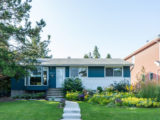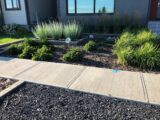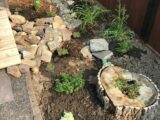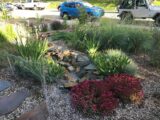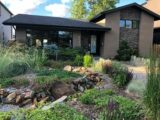Edmonton Infill Resilient Landscaping Research and Demonstration Program
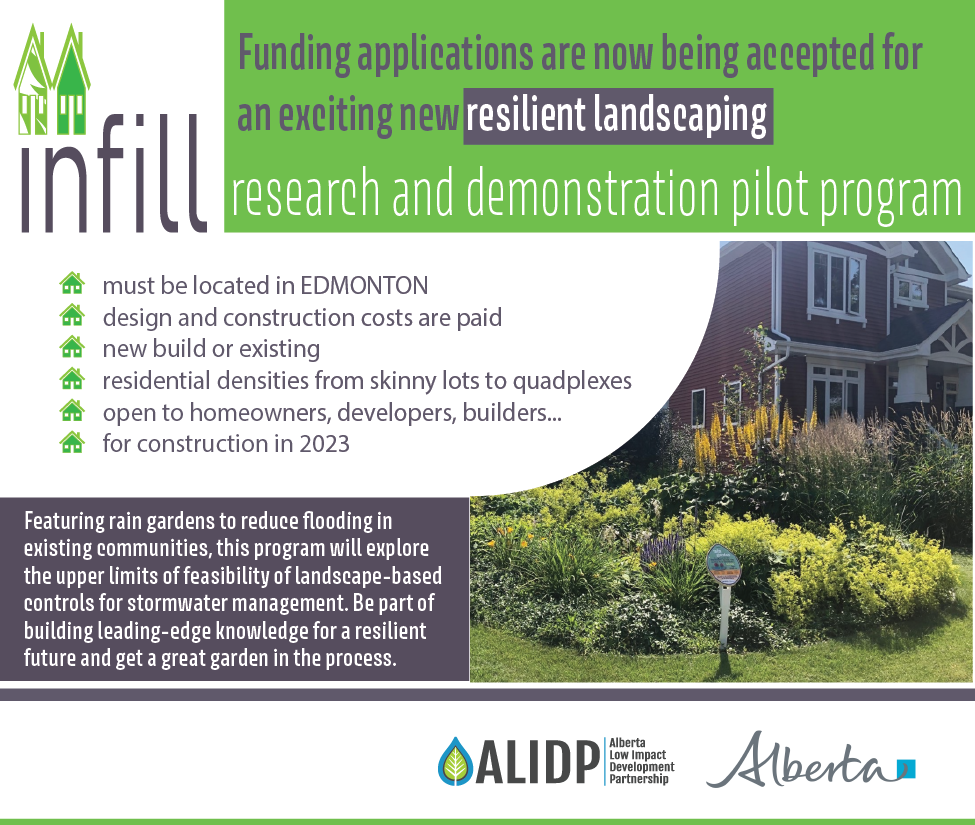
Interested in applying? Answer a simple survey here to have your site evaluated.
What are rain gardens?
Rain gardens are shallow, planted depressions that receive rainwater from (usually) roofs. They mitigate flooding by slowing down and holding back runoff. Variations include stormwater planters and wicking beds.
More information about rain gardens can be found on our YouTube site and in the Clean Runoff Action Guide.
Why do we need rain gardens in the context of infill development?
Existing, older neighbourhoods are subject to increasing densification through infill development. These communities generally have:
- smaller, sometimes non-existent storm service, or services combined or partially combined with sanitary sewers,
- increasing imperviousness as more parcels are redeveloped, and
- elevation discrepancies between new and existing buildings
all contributing to overland and downstream flooding.
Communities partially address the challenge through the retrofit of dry ponds on neighbourhood lands, however, this does not necessarily reduce flooding on streets and properties upstream of the pond.
Controlling how much flow makes it to the street in the first place is source control and is the functional focus of micro-detention and retention features like rain gardens. It is by now generally recognized that source control is an important element for stormwater management in densifying neighbourhoods.
Why Edmonton?
EPCOR has introduced the Stormwater Integrated Resource Plan (SIRP) and they, along with the City of Edmonton, are working hard to mitigate flooding in older communities, including supporting action on private land. To support the implementation of green solutions rather than conventional grey/piped ones, they have drafted the possibility for corner-lot triplex and quadplex units to forego a stormwater tie-in if a green solution can be implemented to match the performance of the conventional piped requirement, which is detention of the one in five year, 4-hour storm event. A green solution provides numerous co-benefits that a pipe does not, and this ALIDP program is designed to showcase these green solutions, springboarding off of EPCOR's initiative.
How much rain garden are we talking about?
We are looking for a total of 165 square metres of rain garden to be implemented over approximately six sites. Smaller sites will include approximately 20 square metres each and larger sites will be approximately 35 square metres. These areas will be broken up according to where the runoff is coming from on each site, it most likely won't be a single large garden but several smaller ones. The sizing of the garden is ideally 10% of the roof area that drains into it.
Typologies
There are three general typologies within low- to medium-density residential infill:
- Skinnies. Where a parcel is subdivided, usually into two, and the new single-family unit is detached. Sideyards are usually very narrow.
- Duplexes. Where a parcel is subdivided, usually into two, and the new dwelling shares a common wall with its neighbour.
- 3/4s. Three or four connected dwellings on a single parcel, with a wide variety of potential configurations.
Below are some general location and configuration ideas:
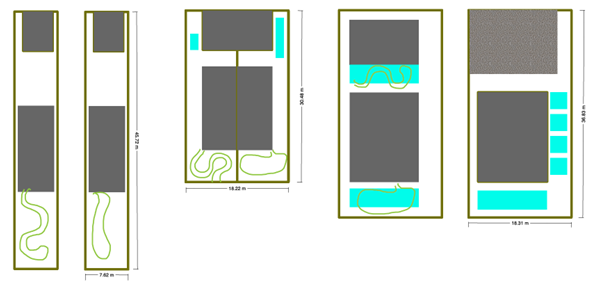
Interested in applying? Answer a simple survey here to have your site evaluated.
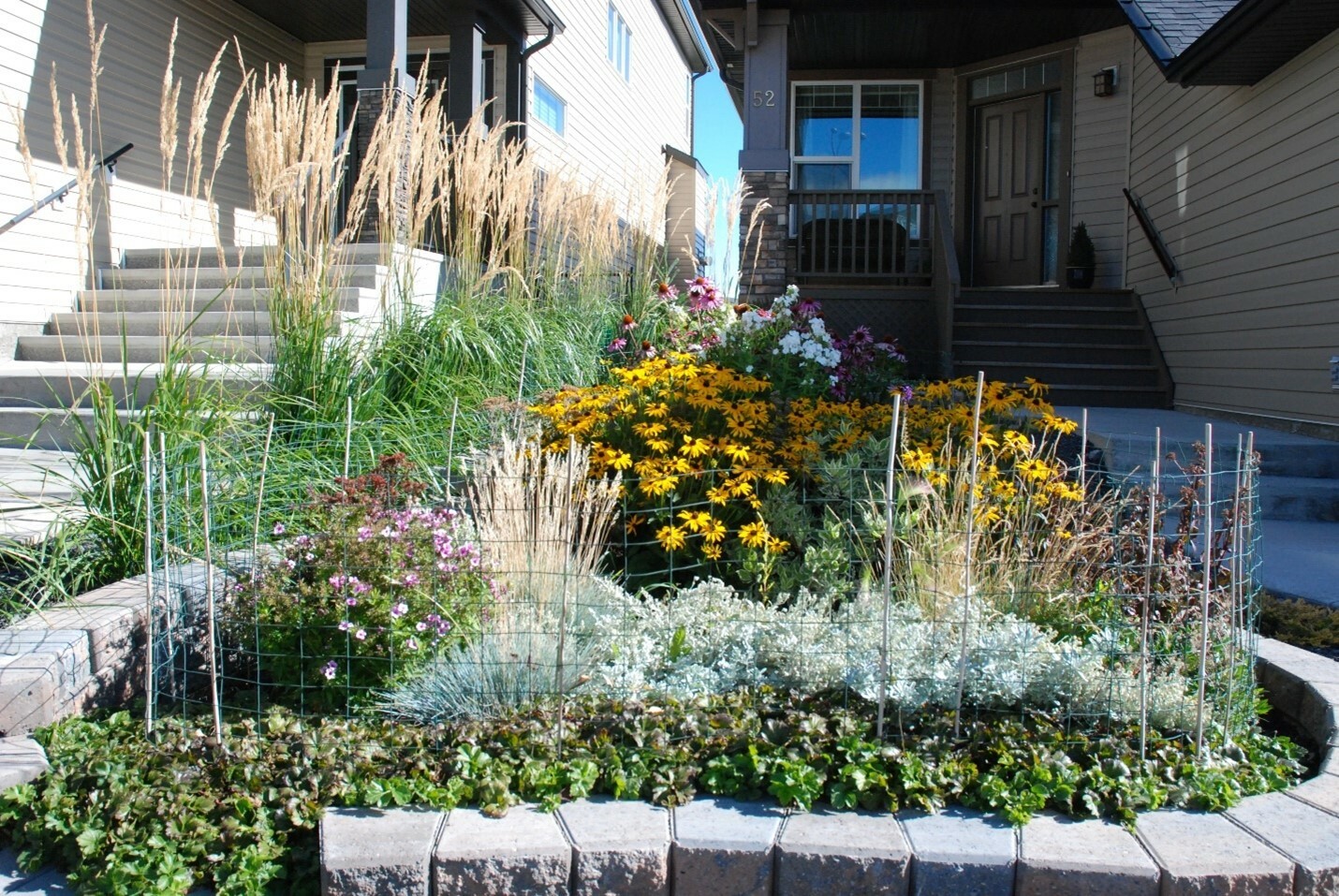
FAQs
Q: How will sites be chosen?
Sites will be selected to fulfill representative building typologies. Considerations will include access, visibility, direction, slope, roof-to-rain-garden ratio, surrounding landscaping features, presence of mature trees. Nothing in particular disqualifies a site it's more a question of balancing opportunities to demonstrate an array of options and to fulfill research objectives.
Q: Who decides what sites are chosen?
The ALIDP is solely responsible for site selection.
Q: How long is the application period open?
Applications will be taken until the program is filled.
Q: Do I need to find my own landscaper?
We can work with a landscaper that you provide; or we can source one.
Q: Can I use a landscaper I already have work in progress with?
Yes, we can piggyback on work in progress.
Q: What say do I have in the design?
In order to meet an array of research needs, there are functional aspects that need to be taken into consideration. These include sizing, configuration and plant types. Your preferences will be taken into account up to the end of the conceptual design stage, which will include a drawing showing the approximate position and size of features and their associated proposed plants. You are encouraged to share any preferences that relate to aesthetics. After this stage the proponent (you) will agree to moving forward and if you withdraw after this point, any costs incurred subsequent to the preparation of the concept drawing will be your responsibility. We anticipate being able to accommodate proponent requests, but we are juggling numerous research objectives so there may be some limits on e.g., shrubs vs. perennials or shape. Most of the time the site dictates the opportunities anyhow.
Will you use native plants?
Yes, we love native plants! We will use a combination of true natives, nativars, and locally adapted plants to achieve various objectives. You can request an exclusively native plant palette, subject to availability.
What about the style?
In the image gallery at the end of this page you can see some examples of early stages (soon after planting) of past work. Both formal and informal styles can be achieved. We also have the option to do in-the-ground rain gardens but also wicking beds and stormwater planters. Anything is possible.
Q: How are costs covered?
We can work with your particular context. Usually the ALIDP will be responsible for the initial exploration of the candidate site up to the conceptual design stage. Then the work is handed over to the landscaper. You then enter into a normal contract agreement with the landscaper and a contribution agreement with the ALIDP and an overall Memorandum of Understanding on Roles and Responsibilities of all three parties. The ALIDP reimburses the proponent once the installation is completed satisfactorily, who pays the landscaper. The ALIDP manages the research component independently and coordinates it with the landscaper. The ALIDP takes surety to ensure that establishment maintenance is completed satisfactorily ($1000 to $2000 depending on the size of the project) and returns it after 3 years of completion of the project. It may sound convoluted but is actually straightforward.
Q: What are the research objectives?
The three main questions we are asking are:
- What is the influence of shape and contact with surrounding landscaping on soil moisture, ponding depth and spill behaviour?
- What is the influence of ratio of contributing area (roof area) to receiving area (rain garden) on soil moisture, ponding depth and spill behaviour as well as vegetation health?
- How do woody species (shrubs) vs. herbaceous species (flowering perennials, grasses and grass-like species) influence soil moisture, ponding depth and spill behaviour?
The findings from this program will supplement ongoing monitoring of rain gardens in less demanding conditions that has been going on at installations in Calgary under our first 'Rain Gardens 4 Resilience' program that started back in 2017.
Q: Who will conduct the research?
Research will be conducted by the University of Alberta Civil and Environmental Engineering Department under the supervision of Dr. Wenming (William) Zhang, and by the ALIDP, under the oversight of the ALIDP Research and Monitoring Working Group.
Interested in applying? Answer a simple survey here to have your site evaluated.
Have more questions? Please email leta [at] alidp [dot] org to chat.
The Watershed Resiliency and Restoration Program is our funding partner for this project. Learn more about the WRRP Program
Below are images from the early days of some projects we have constructed. These are on lower-density sites and are all of an informal style. Since this time, native plant availability has increased and we have learned more about how to best construct these types of installations, so take it all with a grain of salt. The main point is that these gardens look pretty much like any other kind of garden.
